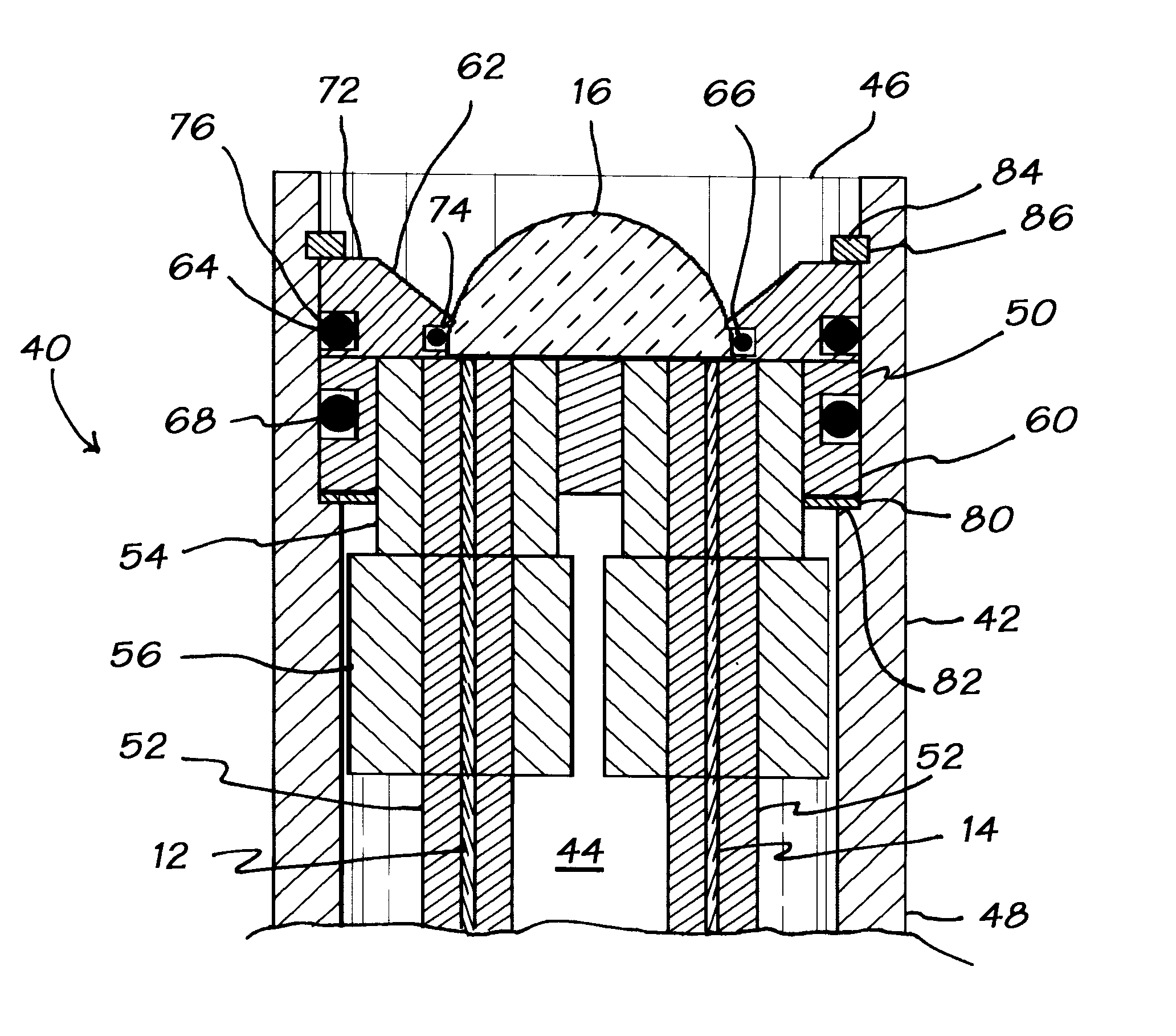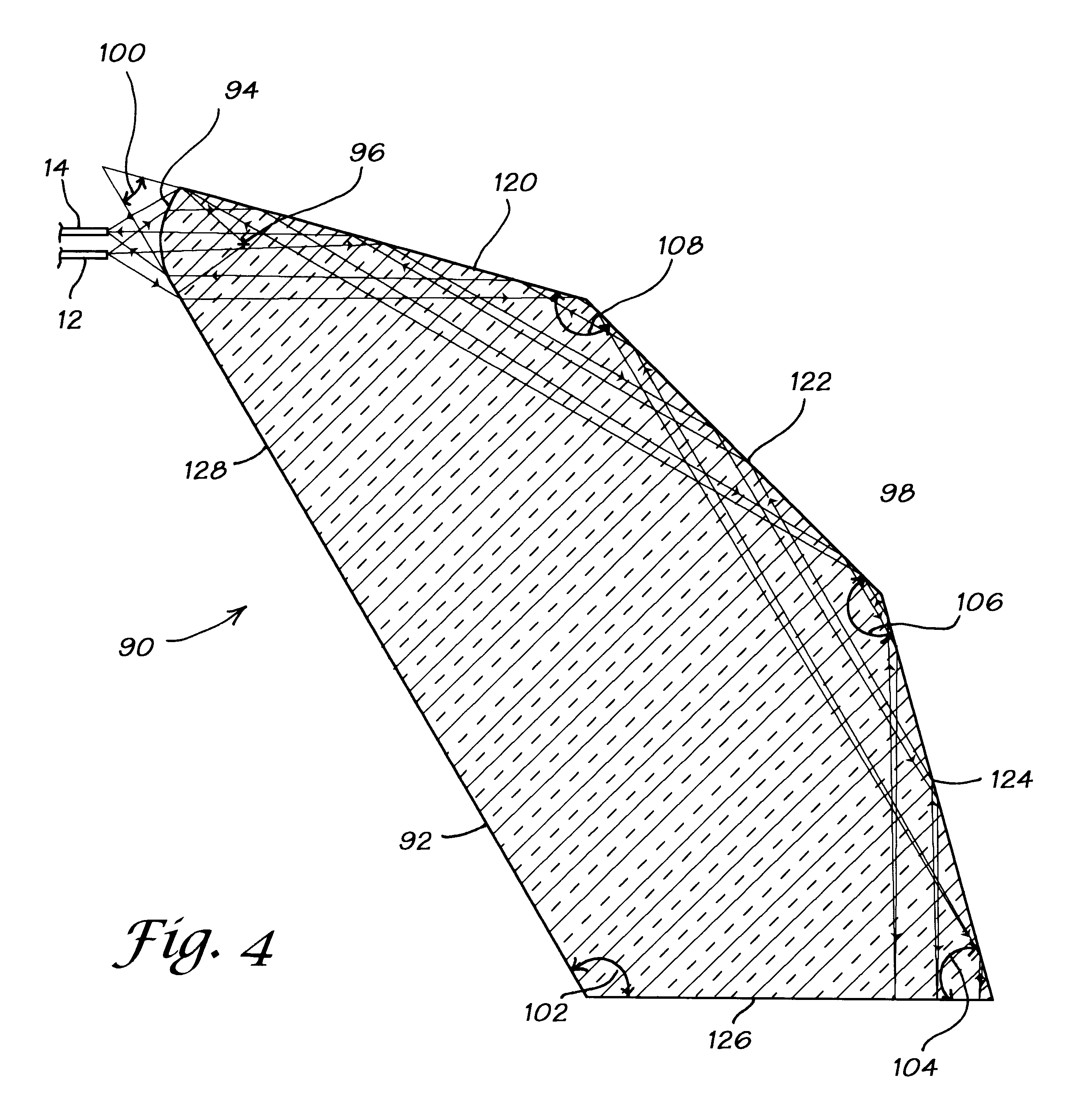Fiber optic probe for attenuated total internal reflection spectrophotometry
a fiber optic and internal reflection technology, applied in the field of fiber optic probes for spectrophotometric analysis, can solve the problems of perturbing the source, affecting and the data obtained from the sample is not always truly representative, etc., and achieves the effects of reducing the cost of the sample, and improving the quality of the sampl
- Summary
- Abstract
- Description
- Claims
- Application Information
AI Technical Summary
Benefits of technology
Problems solved by technology
Method used
Image
Examples
Embodiment Construction
In the following description, reference numerals are used to identify structural elements, portions of elements, or surfaces in the drawings, as such elements, portions or surfaces may be further described or explained by the entire written specification. For consistency, whenever the same numeral is used in different drawings, it indicates the same element, portion, surface and area as when first used. As used herein, the terms "horizontal," "vertical," "left," right," "up," "down," as well as adjectival and adverbial derivatives thereof, refer to the relative orientation of the illustrated structure as the particular drawing figure faces the reader.
An ATIR probe according to a preferred embodiment of the present invention includes an optical element or lens, a light-transmitting fiber that directs incident light to the lens, a light-receiving fiber that receives reflected light from the sample interface, and coupling means for holding these components in precise optical alignment....
PUM
 Login to View More
Login to View More Abstract
Description
Claims
Application Information
 Login to View More
Login to View More - R&D
- Intellectual Property
- Life Sciences
- Materials
- Tech Scout
- Unparalleled Data Quality
- Higher Quality Content
- 60% Fewer Hallucinations
Browse by: Latest US Patents, China's latest patents, Technical Efficacy Thesaurus, Application Domain, Technology Topic, Popular Technical Reports.
© 2025 PatSnap. All rights reserved.Legal|Privacy policy|Modern Slavery Act Transparency Statement|Sitemap|About US| Contact US: help@patsnap.com



